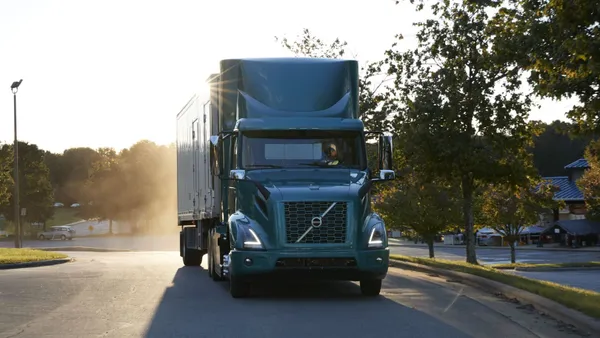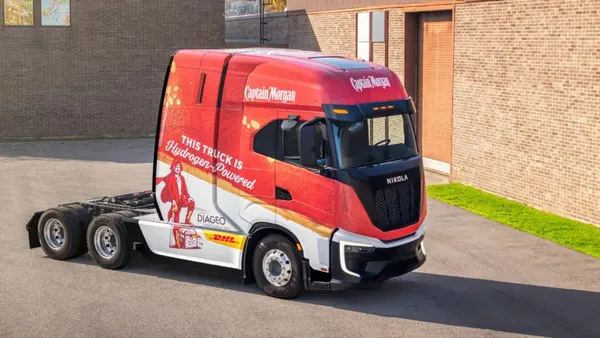Dive Brief:
- ACT Research updated its order forecast for 2020 on Wednesday, boosting its expected orders for Class 8, as well as Class 5-7, vehicles.
- Kenny Vieth, ACT president and senior analyst, said data has been revised to an expected 193,000 in 2020 for Class 8 orders, up from an earlier forecast of 169,000. Vieth said ACT also expects 206,000 orders of Class 5-7 vehicles, up from an earlier forecast of 187,000.
- Other signs point to economic growth in the industry. On Wednesday, the American Association of Railroads reported U.S. weekly intermodal volume, ending Aug. 8, was up 1.9%, compared to the same week in 2019. Intermodal freight volumes plummeted by 17% in April and have slowly recovered. In July, the monthly volume was down 1.4% year over year.
Dive Insight:
The revised ACT forecast and intermodal volumes indicate the industry is seeing strong freight-movement demand months after the worst of the shutdowns began. Vieth said that forecasters may have overestimated the impact of COVID-19 on trucking and underestimated government actions.
"We didn't foresee the impact of trillions of dollars of stimulus," said Vieth. Vieth noted the stimulus worked on the business side and the consumer side, expanding unemployment payments to out-of-work people and extending loans to business. That relief kicked off with the CARES Act, passed March 27.
Other factors in the new forecast was a string of positive economic news, especially a rise in spot rates, Vieth said. On Aug. 6, DAT reported spot rates at the beginning of August were almost at their high for 2020. The higher rates included all the major segments of dry van, reefer and flatbed.
With capacity tight, shippers and brokers posted an 8.6% increase in loads, week over week, while truck postings fell 8%, DAT reported. Load-to-truck ratios increased in all segments, with the van ratio at 5.2 after averaging 4.4 in July. Average reefer ratio was 9, the highest in two years, DAT said. Flatbed ratio was 30.6, ahead of the 2019 average. Van and reefer rates began August higher than July averages, at $2.20 and $2.42 per mile, respectively. Flatbed was up 13 cents to $2.20 per mile.
Intermodal has also been coming back to normal levels. J.B. Hunt, one of the top intermodal providers, said during its second quarter earnings presentation on July 16 that business for intermodal gradually increased, with the second half of June seeing more business than April or May.
Carriers are seeing business confidence in their shippers too, Vieth said. That means carriers will plan on buying more trucks even as many trucks are still idle. A rebound in orders is likely to be ongoing — and not just for Class 8 trucks.
"Classes 5-7 OEMs appear to be betting on business and consumers' resilience," Vieth wrote.
Such business confidence is seen by Union Pacific too.
"Demand is picking up," said Kenyatta Rocker, the EVP of marketing and sales at Union Pacific, on an earnings call late last month. "Our volumes are really increasing each week. They're pretty strong. All the dynamics show that we're going to have a pretty solid peak season. ... Warehouse inventory is normalized."













